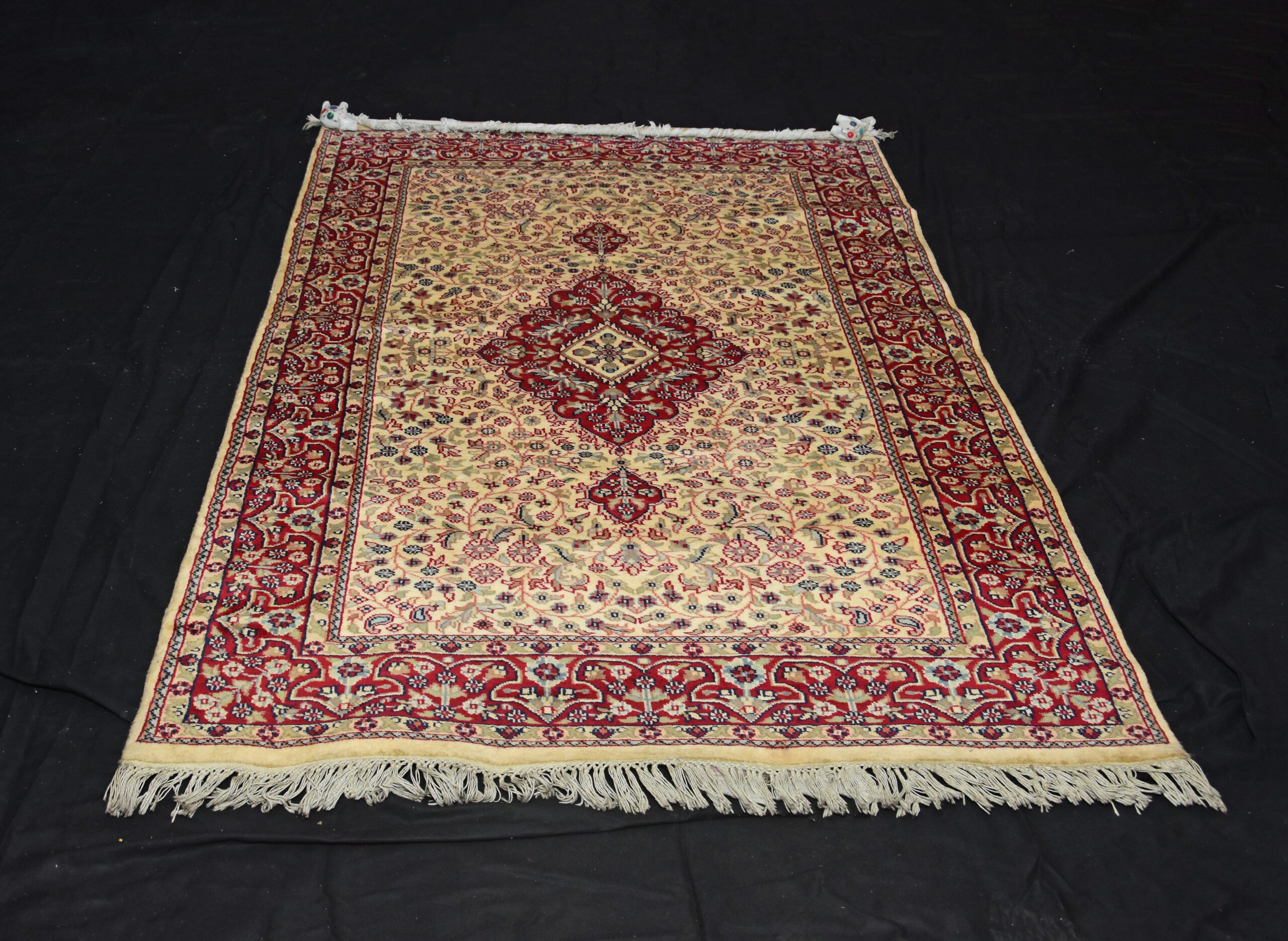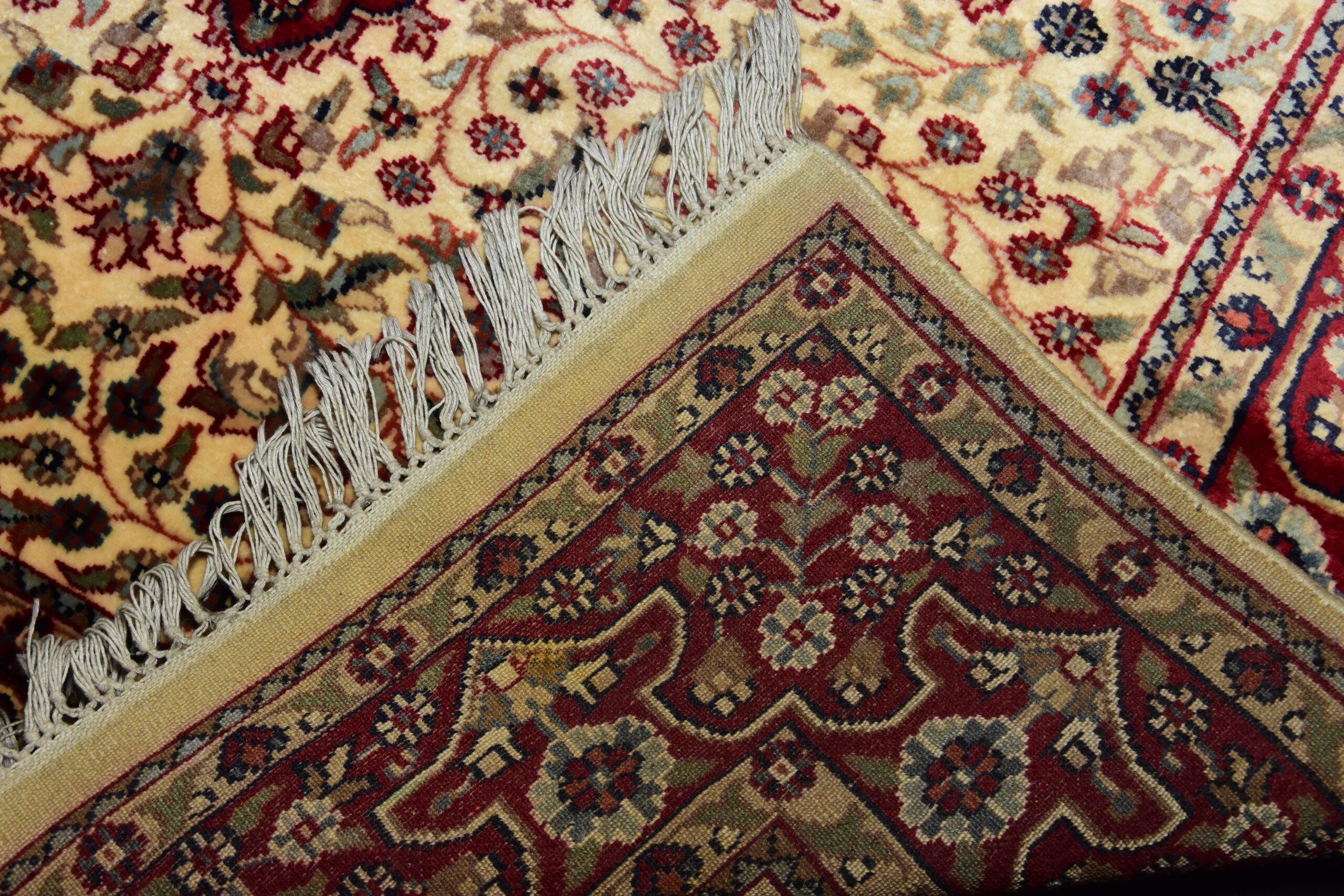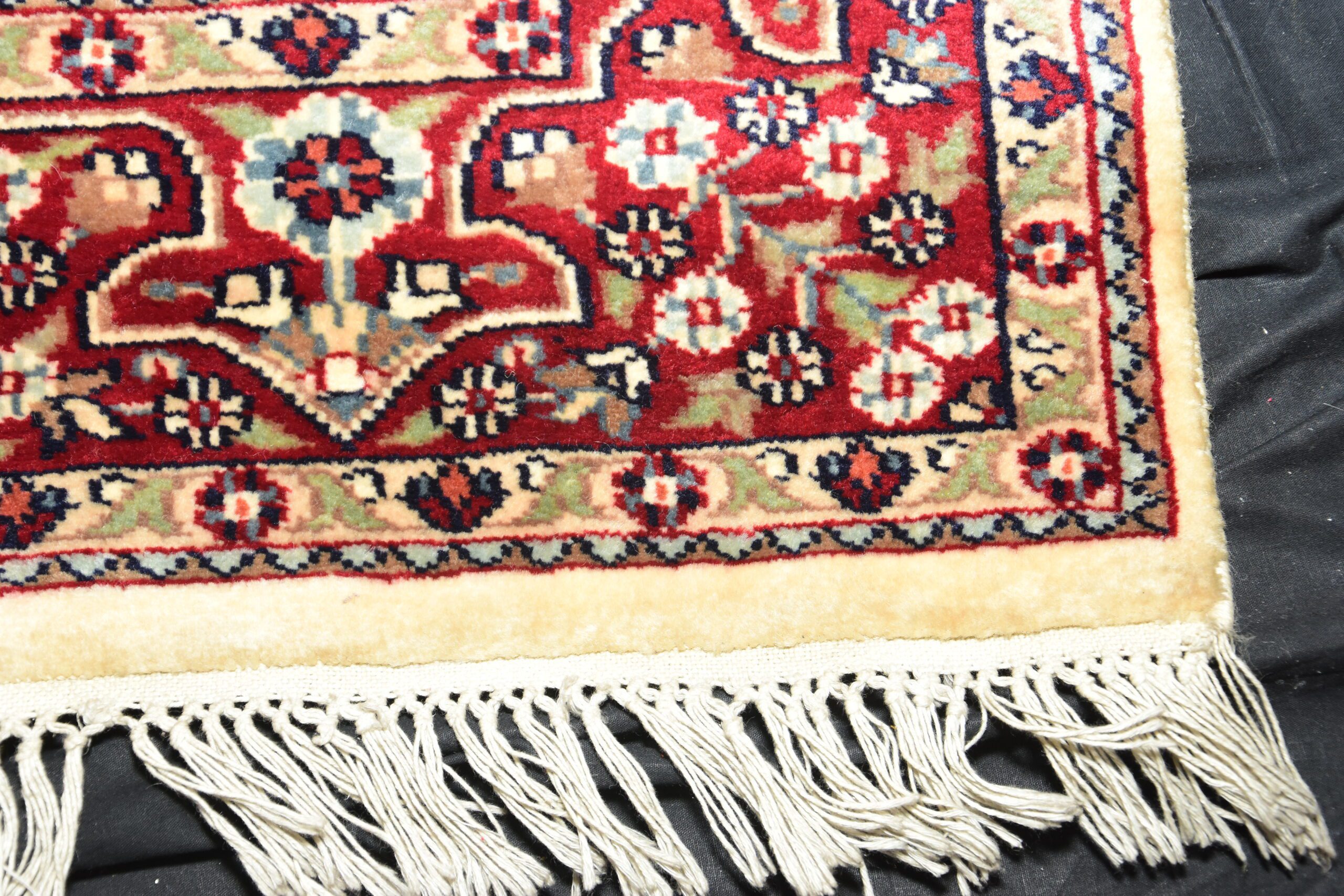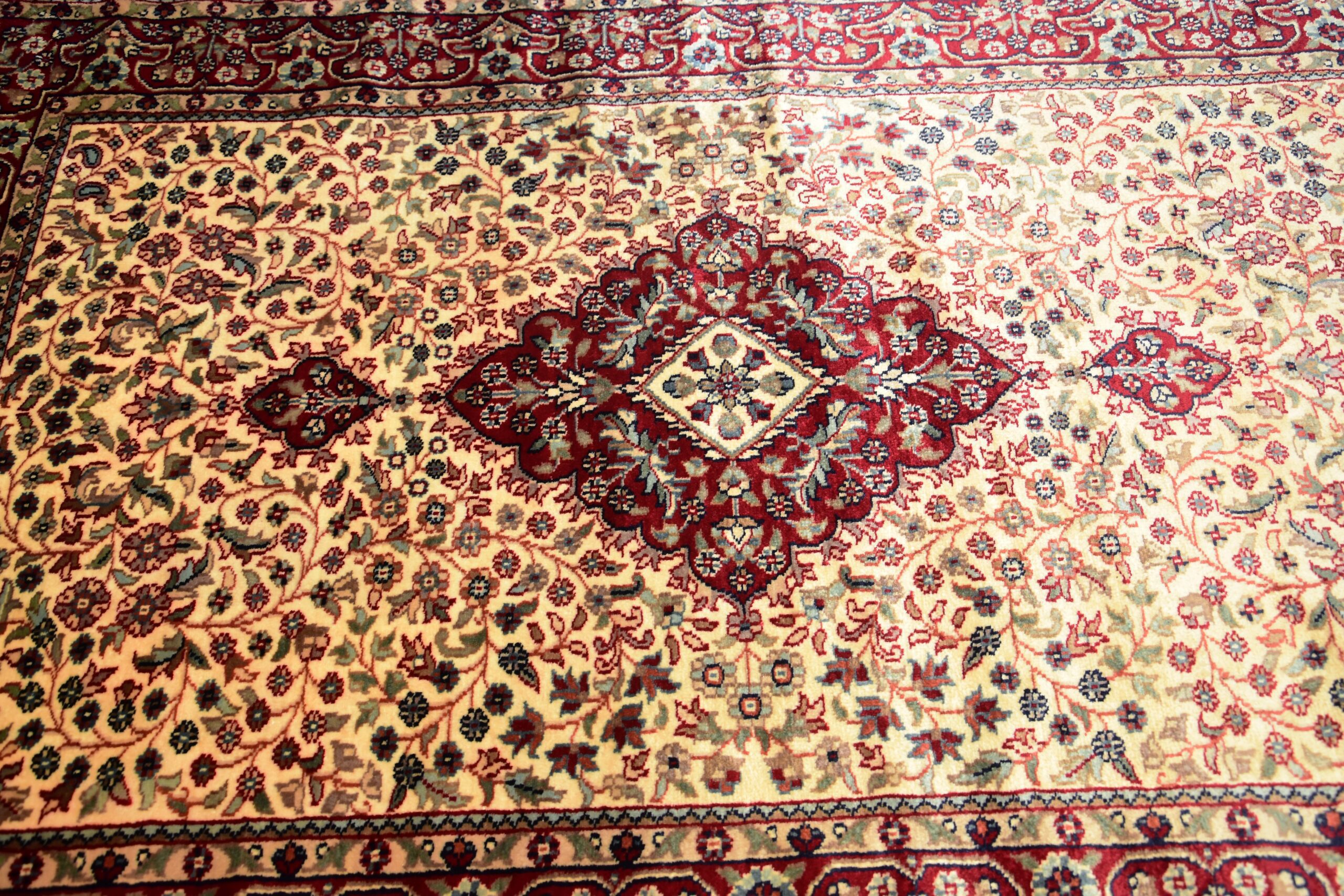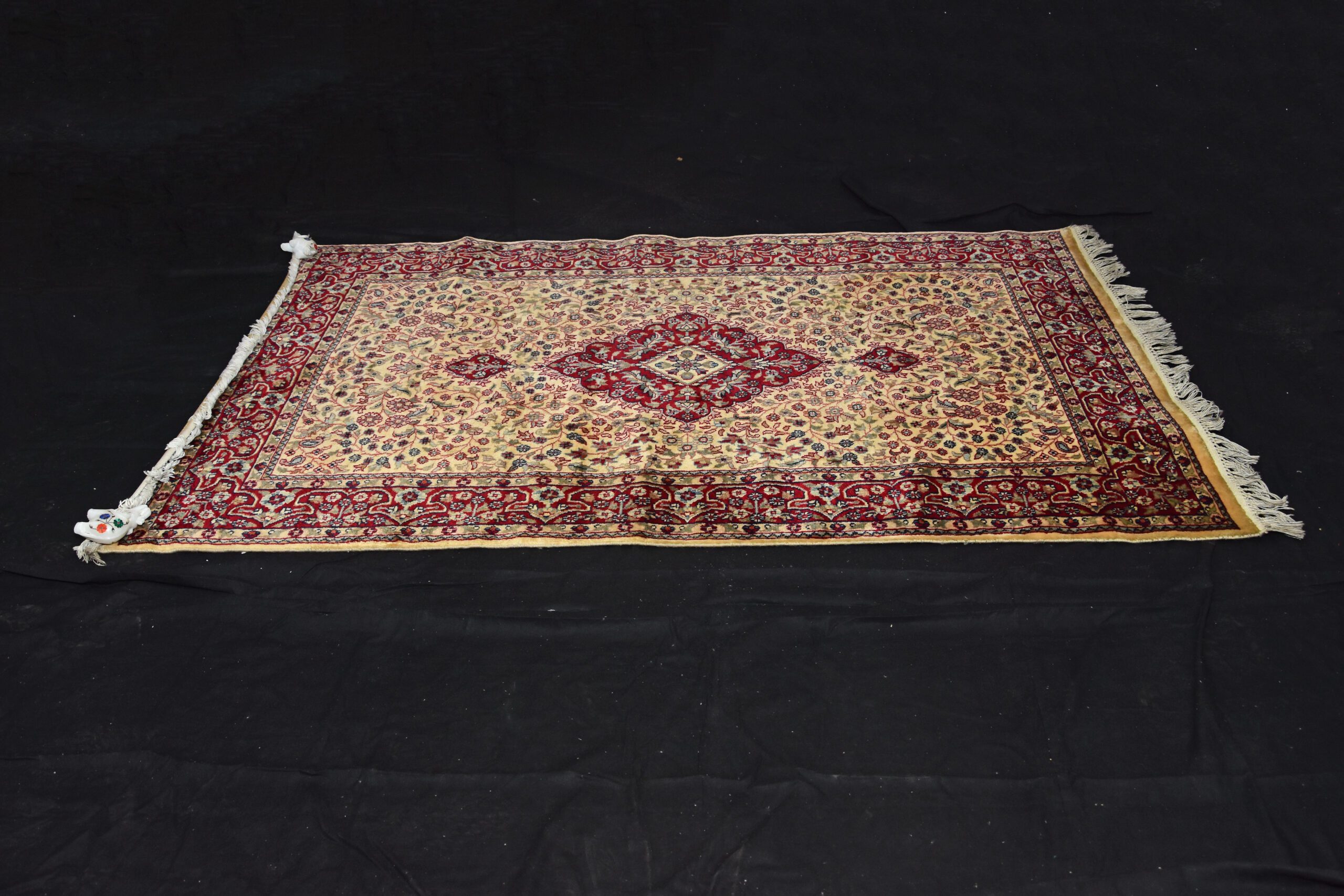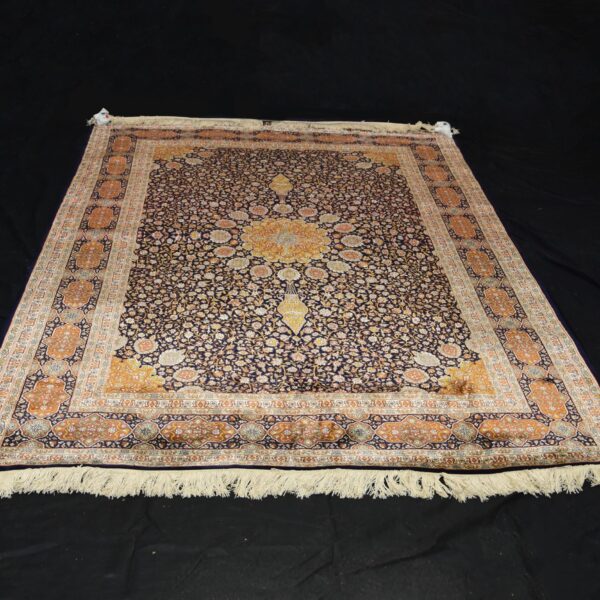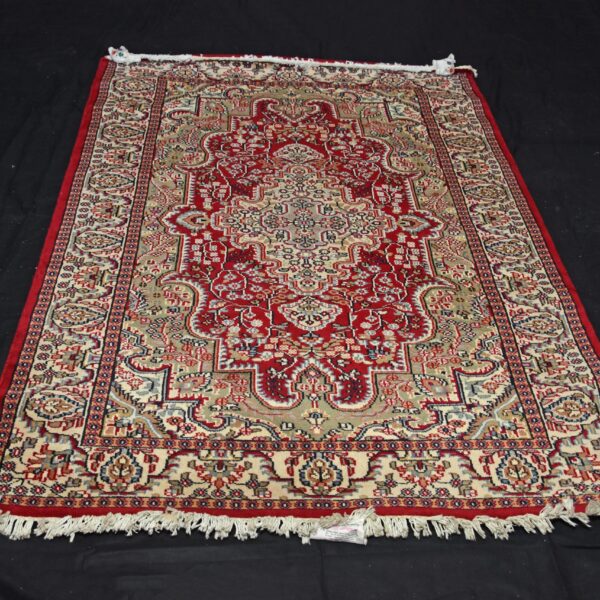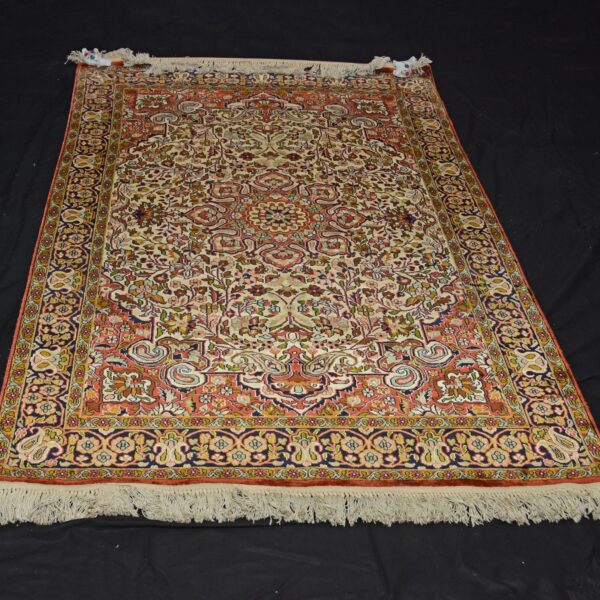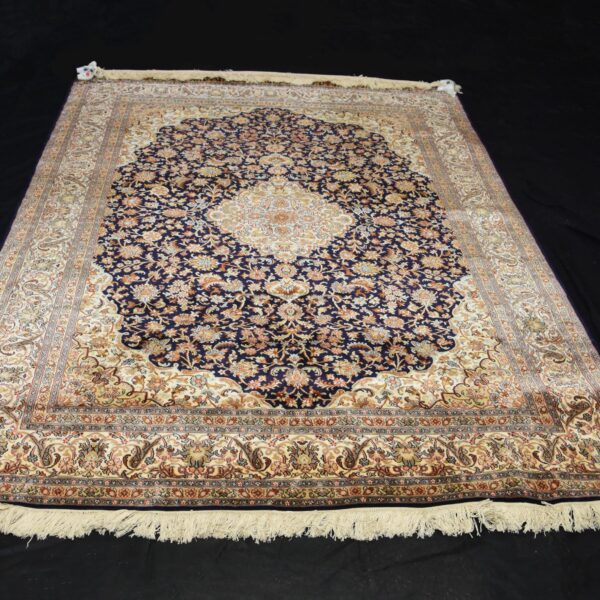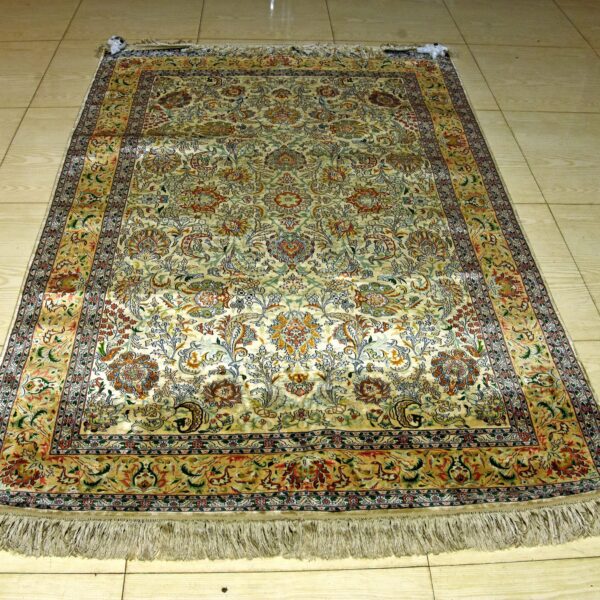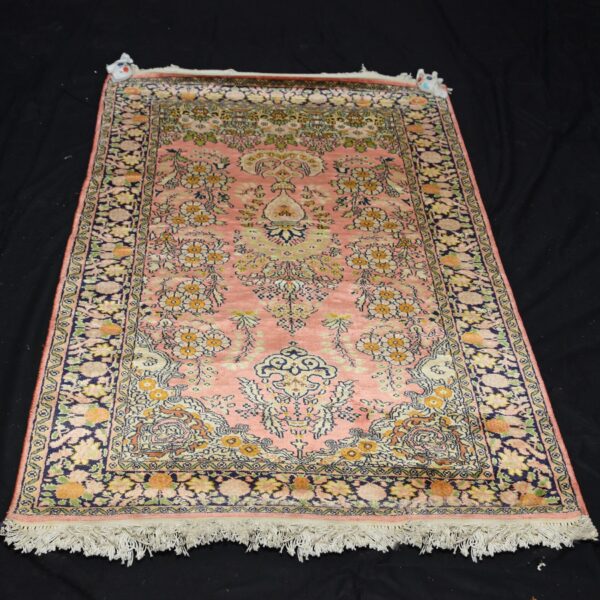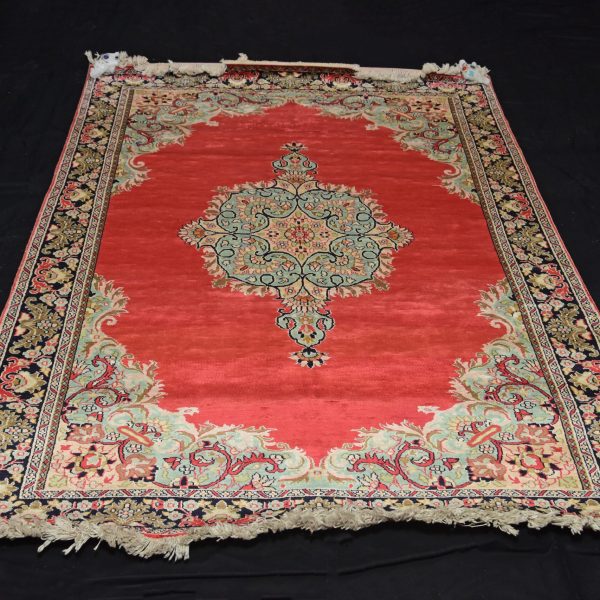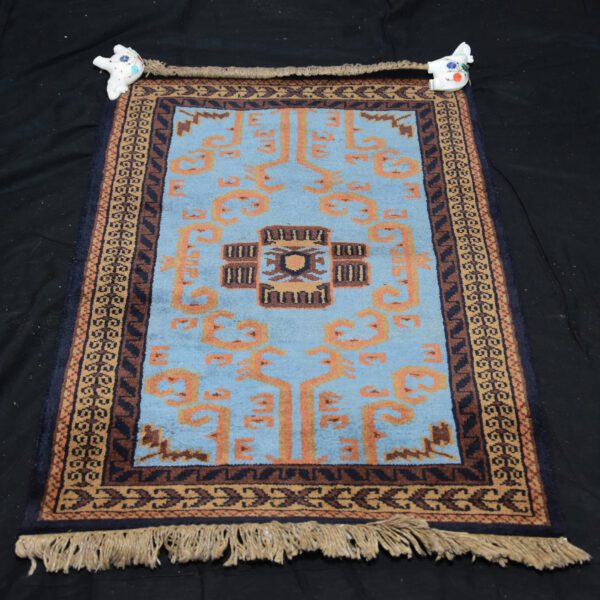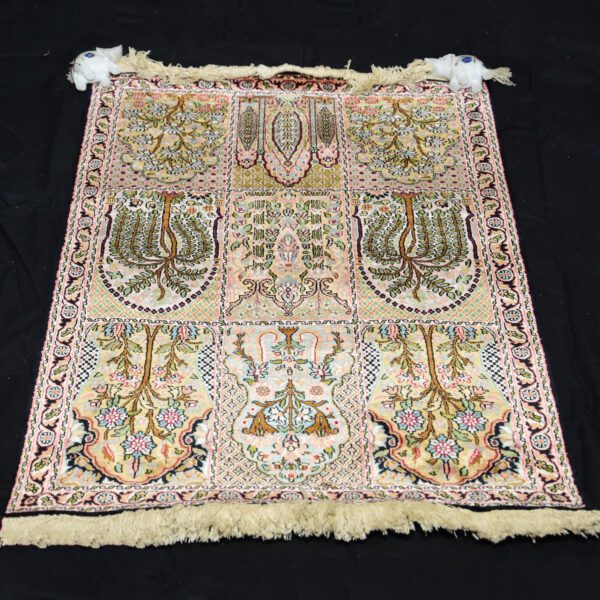Details
Creating a wool-on-cotton Kashmiri carpet involves a different set of materials compared to silk-based carpets. The process is labor-intensive and requires skilled artisans. Here is an overview of how a wool-on-cotton Kashmiri carpet is typically made:
1. Designing:
The process begins with the creation of a design for the carpet. Skilled artisans, often referred to as “karigars,” draw intricate patterns on graph paper, determining the layout of the carpet.
2. Yarn Preparation:
Cotton is used for the warp (lengthwise threads) and weft (crosswise threads) of the carpet, providing a sturdy foundation. Wool is used for the pile, which creates the surface of the carpet. The cotton is cleaned, sorted, and dyed, while the wool is carefully selected and dyed in various colors.
3. Setting Up the Loom:
The cotton warp threads are stretched tightly on the loom, creating the base for the carpet.
4. Knotting:
The weaver uses the predetermined design and starts knotting the wool pile around the cotton warp threads. The choice of knotting technique, either Persian or Turkish knot, depends on the design and the weaver’s preference.
5. Weaving:
The weaver meticulously follows the design, knotting the wool pile to create the desired patterns. This process demands skill and precision to ensure the knots are consistent and well-packed.
6. Shearing:
Once a section of the carpet is completed, the pile may be longer than the final desired height. The carpet undergoes shearing to achieve the appropriate length, revealing the intricate patterns and creating a uniform surface.
7. Washing and Finishing:
The completed carpet is washed thoroughly to remove any residual dyes and impurities. It is then left to dry in the sun. Additional finishing processes may include stretching, ironing, and adding fringes.
8. Quality Control:
Skilled artisans inspect the carpet for any imperfections, ensuring that it meets the required quality and design standards. Corrections or adjustments are made if necessary.
9. Final Inspection and Packaging:
The finished carpet undergoes a final inspection to confirm its adherence to quality standards. Once approved, the carpet is carefully rolled, packaged, and prepared for shipment.
The wool-on-cotton Kashmiri carpet is known for its warmth, durability, and the intricate patterns created by the skilled artisans, making it a sought-after piece of craftsmanship.


